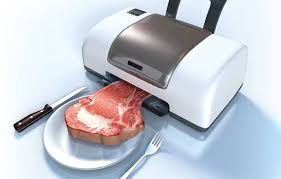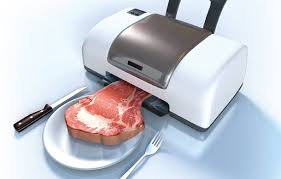
The success rates of saving lives among young children through complex organ transplantations with the use of 3D printing technology is being bettered by the Stratasys at the Guy’s and St Thomas’ NHS Foundation trust in London.
The organization cited the case of two-year-old Dexter Clark with a kidney ailment and had got a larger-than-average kidney from his father, Brendan Clark recently. according to Mr. Pankaj Chandak, Transplant Registrar at Guy’s and St Thomas’ NHS Foundation Trust, a critical role in the operation was played by 3D printing.
More than 2.4 million patients annually in its acute and specialist hospital services and community services are catered to by the Guy’s and St Thomas’ NHS Foundation Trust which is also amongst the biggest of the NHS trusts in the U.K. Stratasys multi-material 3D printing is being used by surgeons across the Trust. It is being used for strategizing the most intricate of operations at the organ transplantation department that has championed the use of the technology. this Trust is the first in the world that had made use of 3D printed models to strategizing and planning an operation in advance that helped to transplant a kidney from an adult into a child suffering anatomical complexities.
For Dexter, doctors found that the child was in need of a kidney transplantation even before he was born where his father would be the likely donor. The ailment in Dexter had forced him to remain bed ridden be fed through a feeding tube and debarred form even eating a proper meal with the family. There were two critical problem challenges for the surgical team when they sought to undertake the transplantation operation. The risk to Dexter’s life was significant because he was less than 10 kg in weight. Additionally, compared to the average male child, the kidney of the father was much larger which raised questions about the potential probability and security of putting the father’s kidney into Dexter’s abdomen.
For such surgeries, typically, in the pre-surgical planning process, conventional medical imaging is used. But these methods often have limitations. Therefore, surgeons utilized a multi-material Stratasys 3D printer for developing two intricate, patient-specific models for pre-surgical preparations.
“Using our 3D printer, we worked in collaboration with Nick Byrne and his team – clinical scientists from our medical physics department who specialize in medical imaging. They converted patient CT scans into anatomically accurate, multi-material 3D models. These helped us appreciate aspects such as depth perception and space within the baby’s abdomen, which can often be difficult to ascertain when looking at conventional imaging,” explains Mr. Chandak.
“The ability to print a 3D model of the patient’s anatomy in varying textures, with the intricacies of the blood vessels clearly visible within it, enables us to differentiate critical anatomical relations between structures. The flexible materials also allowed us to better mimic the flexibility of organs within the abdomen for simulation of the surgical environment.”
The 3D model was before and even during the operation to make an assessment about the best manner in which would snugly fit into little Dexter.
“This technology has the potential to really enhance and aid our decision-making process both during pre-surgical planning and in the operating room, and therefore can help in the safety of what is a very complex operation and improve our patient care,” says Mr. Chandak.
Emily Clark, Dexter’s mother, comments, “Since the transplant, Dexter is a changed boy, eating solid food for the very first time. We always knew the operation would be complicated but knowing that the surgeons had planned the surgery with 3D models that matched the exact anatomy of my husband’s kidney and son’s abdomen, was extremely reassuring. We hope that Dexter’s case will offer other suffering families similar reassurance that cutting-edge technology, such as 3D printing, can help surgeons better treat their loved ones.”
(Source:www.businesswire.com)
The organization cited the case of two-year-old Dexter Clark with a kidney ailment and had got a larger-than-average kidney from his father, Brendan Clark recently. according to Mr. Pankaj Chandak, Transplant Registrar at Guy’s and St Thomas’ NHS Foundation Trust, a critical role in the operation was played by 3D printing.
More than 2.4 million patients annually in its acute and specialist hospital services and community services are catered to by the Guy’s and St Thomas’ NHS Foundation Trust which is also amongst the biggest of the NHS trusts in the U.K. Stratasys multi-material 3D printing is being used by surgeons across the Trust. It is being used for strategizing the most intricate of operations at the organ transplantation department that has championed the use of the technology. this Trust is the first in the world that had made use of 3D printed models to strategizing and planning an operation in advance that helped to transplant a kidney from an adult into a child suffering anatomical complexities.
For Dexter, doctors found that the child was in need of a kidney transplantation even before he was born where his father would be the likely donor. The ailment in Dexter had forced him to remain bed ridden be fed through a feeding tube and debarred form even eating a proper meal with the family. There were two critical problem challenges for the surgical team when they sought to undertake the transplantation operation. The risk to Dexter’s life was significant because he was less than 10 kg in weight. Additionally, compared to the average male child, the kidney of the father was much larger which raised questions about the potential probability and security of putting the father’s kidney into Dexter’s abdomen.
For such surgeries, typically, in the pre-surgical planning process, conventional medical imaging is used. But these methods often have limitations. Therefore, surgeons utilized a multi-material Stratasys 3D printer for developing two intricate, patient-specific models for pre-surgical preparations.
“Using our 3D printer, we worked in collaboration with Nick Byrne and his team – clinical scientists from our medical physics department who specialize in medical imaging. They converted patient CT scans into anatomically accurate, multi-material 3D models. These helped us appreciate aspects such as depth perception and space within the baby’s abdomen, which can often be difficult to ascertain when looking at conventional imaging,” explains Mr. Chandak.
“The ability to print a 3D model of the patient’s anatomy in varying textures, with the intricacies of the blood vessels clearly visible within it, enables us to differentiate critical anatomical relations between structures. The flexible materials also allowed us to better mimic the flexibility of organs within the abdomen for simulation of the surgical environment.”
The 3D model was before and even during the operation to make an assessment about the best manner in which would snugly fit into little Dexter.
“This technology has the potential to really enhance and aid our decision-making process both during pre-surgical planning and in the operating room, and therefore can help in the safety of what is a very complex operation and improve our patient care,” says Mr. Chandak.
Emily Clark, Dexter’s mother, comments, “Since the transplant, Dexter is a changed boy, eating solid food for the very first time. We always knew the operation would be complicated but knowing that the surgeons had planned the surgery with 3D models that matched the exact anatomy of my husband’s kidney and son’s abdomen, was extremely reassuring. We hope that Dexter’s case will offer other suffering families similar reassurance that cutting-edge technology, such as 3D printing, can help surgeons better treat their loved ones.”
(Source:www.businesswire.com)





